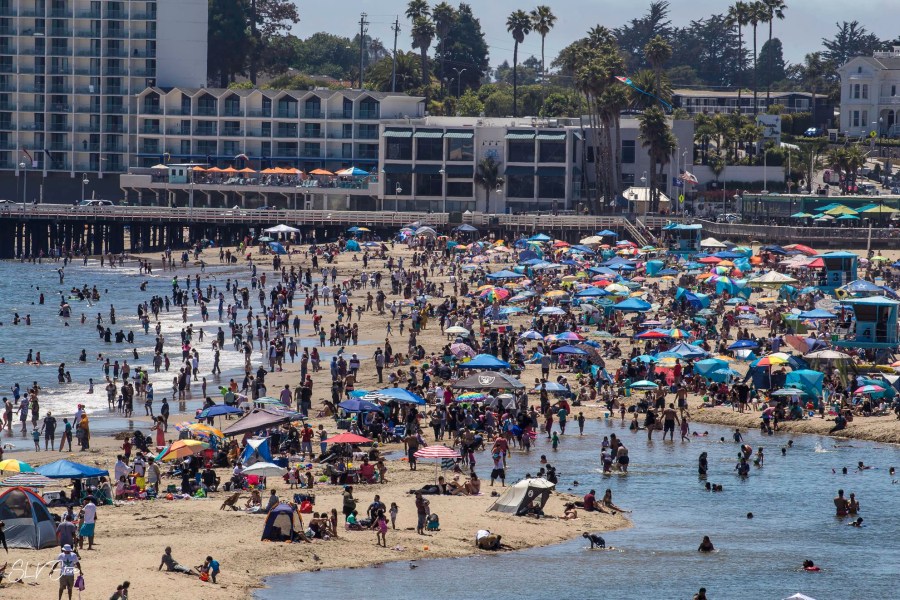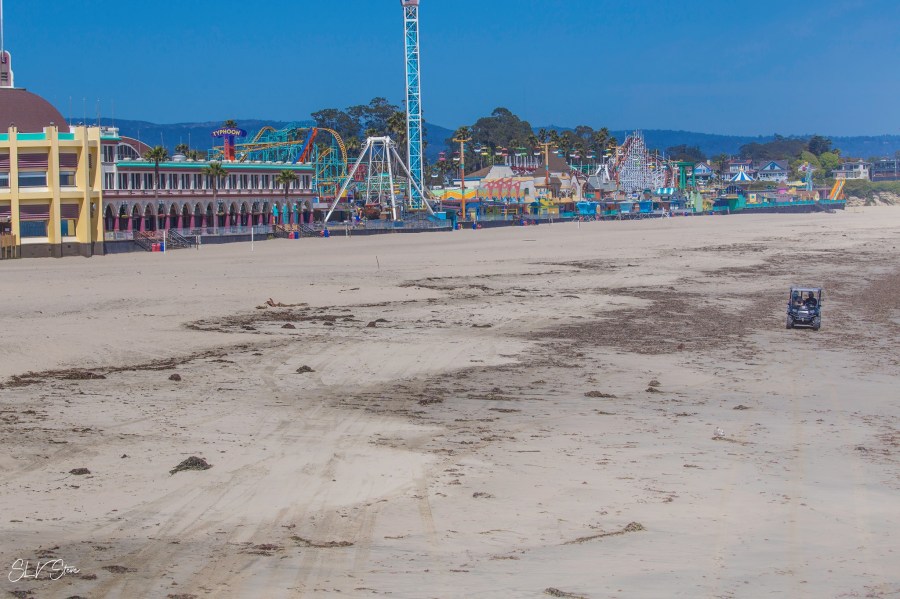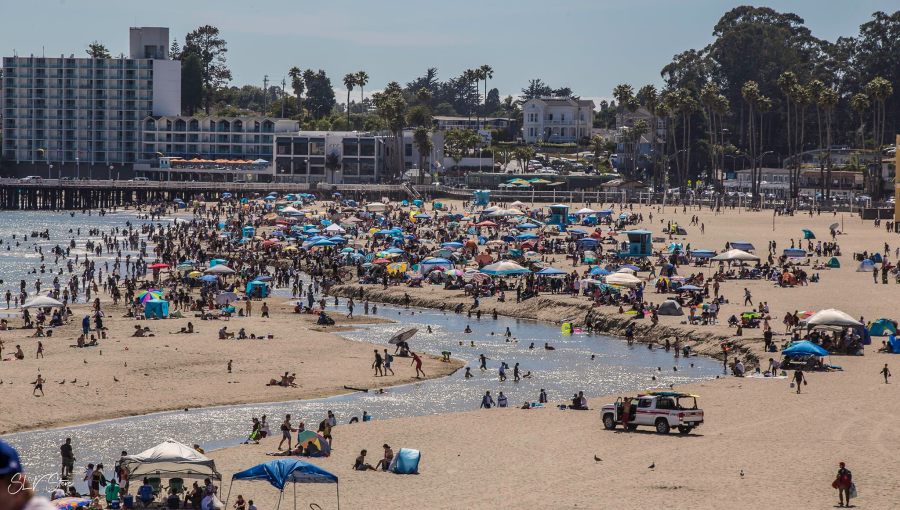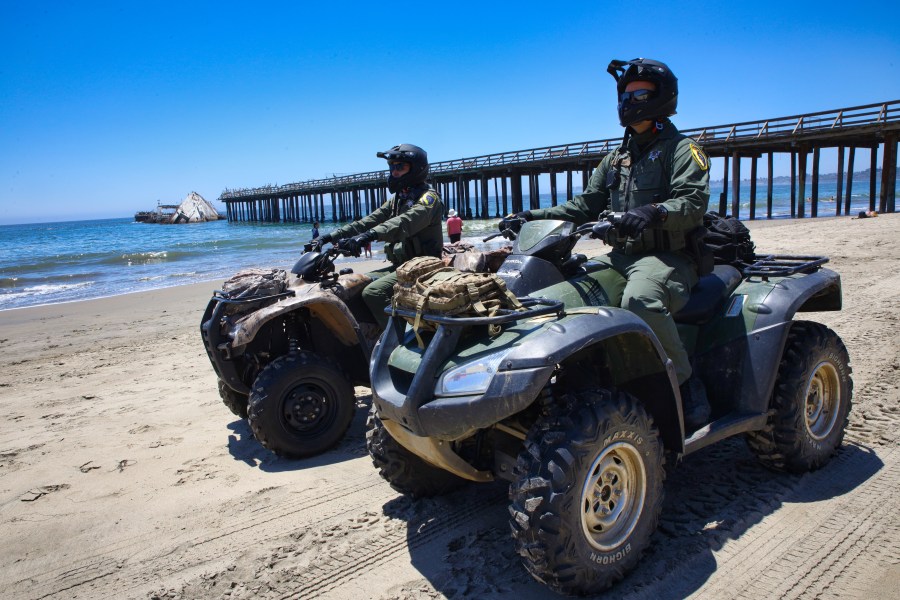SANTA CRUZ, Calif. (KRON) — The number of COVID-19 cases in Santa Cruz County is continuing to surge daily, County Health Officer Gail Newel said.
“We have had dramatically increasing numbers of cases,” she said during a Thursday morning news conference. As a result, the county will likely soon be joining a list it had hoped to avoid: the state’s COVID-19 monitoring “watch list.”
“We have (848) total number of known cases, (but) there are many additional cases that have yet to be reported onto the data dashboard. This takes time and our staff is overwhelmed by the sheer number of cases that are increasing every single day,” Newel said.
Newel also announced that a fourth person, a man in his 70s, has died from coronavirus-related health complications.
She said Santa Cruz was “flagged” by the state Wednesday. If it is added to the list in coming days, it will join the vast majority of California’s other counties, which are already on the list. The designation would mean new economic restrictions must be put in place, such as closing malls, gyms, beauty salons, office spaces for non-essential sectors, and tattoo parlors.
Looking at Santa Cruz’s curve of confirmed total cases (both active and recovered), the curve remained relatively flat until mid-June. On June 14, there were 263. By July 14, the curve climbed steeply to 662, and by July 17, it jumped to 750. As of July 23, there were 878.
Santa Cruz County still has relatively low numbers of COVID-19 cases compared to the rest of California. More than 500 residents have active cases and 334 have recovered from the virus.
A surge of coronavirus cases in Santa Cruz County has some residents alarmed and wondering why officials are keeping beaches open and not discouraging tourism.

Why are the beaches staying open?
County spokesman Jason Hoppin told KRON4 that health officials suspect that the surge was caused by Phase 2 reopening of businesses, which began in late May.
“About two weeks after that … we started to see the large increases in activity. It’s hard to message to people that you can go get your hair cut or go buy a rug, but you need to stay home. It’s a conflicting message and we recognize that. I think that people just generally quit sheltering in place because of the increase in retail activity,” Hoppin said.
Parties and other large gatherings have also been identified as COVID-spreading culprits that created clusters of positive cases.
Hoppin said health officials believe the surge is connected to Phase 2, combined with large gatherings, not beaches and tourism.
Hoppin said, “It’s much better that you’re outdoors than if you’re indoors (in public). Indoor spaces are the risk. If everyone was outdoors, we’d have this thing licked in no time. The beach closure was about discouraging tourism. When it became clear through a series of openings at the state level, and once we were aligned with the state, that the state was allowing tourism, there was no point to keeping the beaches closed. People had ceased to consent to be governed in this area. They were visiting the beaches anyway. We were getting conflicts with police officers. The only recourse was to take people to jail and we don’t want people in jails right now, especially over something as trivial as a visit to the beach. The beaches were crowded before we lifted the beach closure order.”
The county’s Spring and Summer beach rules changed with the tides.
In March, the county reported its first death caused by coronavirus and 41 confirmed cases. At the same time, county leaders urged travelers and college students enjoying Spring Break to stay home, avoid causing crowds on beaches, and to not gather in large groups. The county health officer issued a shelter-in-place order and warned that violating the order was a “misdemeanor subject to citation and even arrest.”
County officials kept a close eye on crowds.
Sheriff Jim Hart said in April, “While the vast majority of Santa Cruz County residents are staying home and following the direction of the County Health Officer, unfortunately some visitors and community members are treating this extraordinary crisis as a holiday.”
Feeling the need for more restrictions, beaches and parks were completely closed between April 8 – April 15. During this window of time the coastline was eerily empty.
Surfing was temporarily banned in Surf City because of fears that surfers catching waves could also catch COVID if the virus spread through the water. The ban was lifted a few days later.

When the weather began warming up in late April, the message from officials focused on staying local and only exercising outside near home. Violators who ventured too far and gathered in groups faced $1,000 fines.
May was marked by the county’s 11-5 rule: Between 11 a.m.-5 p.m., the beach sand was off-limits, but the ocean was open to all water sports, including surfers, swimmers, and kayakers. Outside the 11-5 peak hours hours, beach-goers were still banned from sunbathing, lounging, and other “non-exercise related activities.”
Law enforcement officers conducted sweeps of the sand. Officers said it felt like they were “parting the sea.” The crowds would wash away, only re-converge as soon as the officers left.

As holidays including Memorial Day and Mother’s Day were celebrated, clusters of COVID-19 cases broke out because of large family gatherings. The county wrote, “Public Health has identified four separate clusters of COVID-19 transmission in the South County region. Transmission is associated with close contact between households during family gatherings. These gatherings include interaction between people from different social cohorts, including a multi-generational Mother’s Day gathering and a large gathering involving individuals who traveled from out-of-state.”
Beaches remained uncrowded in March, April, and May as locals and out-of-towners mostly followed the rules. But by June, beach-goers had had enough. They flocked to the coast in droves.
Local photographer SLV Steve captioned one photo he shot June 14 of a beach packed with visitors, “I think we can agree the floodgates opened today onto the Cruz.”

After seeing that the crowds were coming, rules or no rules, county leaders switched things up again. Just before Fourth of July weekend, the county reopened all beaches and lifted the restrictions.
July 4 summer holiday crowds are typically the among the largest of the year, and with a surge in COVID cases unfolding, some residents were confused by the timing of these changes. In an interview with KRON4 this week, county spokesman Jason Hoppin explained the reasons why Santa Cruz is no longer discouraging tourism and plans to keep beaches open.
Officials’ new message is centered on urging everyone to wear face masks, keep 6 feet of social distance, and stay in a social bubble that only includes people who live in your household.
“If you stay within your household, if you maintain physical distancing, if you wear a face covering, and if you wash your hands frequently, that should pretty much do it. There are things you can do to protect yourself and those are the things you should be focusing on. The tourists really probably are not increasing our numbers much at all, and the beach has almost nothing to do with it,” Hoppin said.

Q &A with county spokesman Jason Hoppin:
QUESTION: Why is Santa Cruz County keeping the beaches open despite a surge in Santa Cruz residents becoming infected with COVID this July? Why were the beaches closed or had restrictions earlier this spring and summer, but not now?
ANSWER: “It’s much better that you’re outdoors than if you’re indoors (in public). Indoor spaces are the risk. If everyone was outdoors, we’d have this thing licked in no time. The beach closure was about discouraging tourism. When it became clear through a series of openings at the state level, and once we were aligned with the state, that the state was allowing tourism, there was no point to keeping the beaches closed. People had ceased to consent to be governed in this area. They were visiting the beaches anyway. We were getting conflicts with police officers. The only recourse was to take people to jail and we don’t want people in jails right now, especially over something as trivial as a visit to the beach. The beaches were crowded before we lifted the beach closure order. There was only one city that was able to manage that (closure) and that’s Capitola. That’s because there’s very few entrances to that beach. There are 32 miles of coastline in Santa Cruz County. Managing a beach closure, especially one that only occurs during certain hours of the day from 11 to 5, and requires you to send multiple teams of officers out to sweep the beaches, is just not sustainable from a public safety standpoint. Our officers have better things to do. They would sweep the beaches, and like parting the seas, the crowds would return behind them. So we just decided that it wasn’t really doing anything and it was time to lift the beach restrictions.”

QUESTION: What caused a rise in Santa Cruz County COVID cases?
ANSWER: “The more we understand about this virus, it’s really more of the longer-term indoor interactions. Especially when there are family gatherings or celebrations or events like that, that is where we are seeing our cases increase. We also saw our cases begin to increase with all of this activity that the state allowed. Beginning in late May, we were fully aligned with Phase 2 (reopening) of the state. About two weeks after that is when we started to see the large increases in activity. I attribute that to … it’s hard to message to people that you can go get your hair cut or go buy a rug, but you need to stay home. It’s a conflicting message and we recognize that. I think that people just generally quit sheltering in place because of the increase in retail activity. People do need jobs, that’s another public health risk. Poverty is a public health risk. People need to eat and they need a place to live. So there is a valid argument for keeping some of these things open as safely as possible and not shutting everything down. But really that mid-June period is when we start to see the big increases in case counts here in Santa Cruz County and that was a couple weeks after our full alignment with the Phase 2 reopening.”
QUESTION: The County Health Officer said she expects Santa Cruz wiill be added to the state’s COVID watch list soon because of this surge. What does that mean?
ANSWER: “Under the state plan there is a watch list and if you meet certain metrics, a county can be placed on a watch list which enacts additional restrictions. Most of the Bay Area now, most of the state, is actually on a watch list. One of the interesting things about that watch list is while we do expect to be on that within a week or two here … if you look at a map of the Bay Area and which counties are on the list, it was the coastal beach communities that weren’t on the watch list. It was Santa Cruz County, San Mateo County, and San Francisco County, we were the standouts for a while (with the lowest number of cases).”
QUESTION: Are there fears among Santa Cruz County residents of tourists contributing to the surge?
ANSWER: “There is an argument that if the beaches were not open then people wouldn’t be coming here. We have not found that to be the case. I think we can do better in terms of messaging around the things you can do to protect yourself and your family. We have pretty good useage as far as face coverings go in Santa Cruz County. If some of our residents have been to other parts of the state they know that we actually are doing pretty good compared to those locations which I won’t name. But we can do a little bit better. If we can get more people to do that (wear masks), especially if we can get the visitors to do that, because that is an issue, that we would do better. One of the problems is the large gatherings of people. Fourth of July parties, birthday parties. Those are the events that are leading to the increases in cases. We had over 100 cases from just four gatherings. They are events that are extremely high risk to those who attend them if there is somebody in the group that has COVID. If you stay within your household, if you maintain physical distancing, if you wear a face covering, and if you wash your hands frequently, that should pretty much do it. There are things you can do to protect yourself and those are the things you should be focusing on. The tourists really probably are not increasing our numbers much at all, and the beach has almost nothing to do with it.”